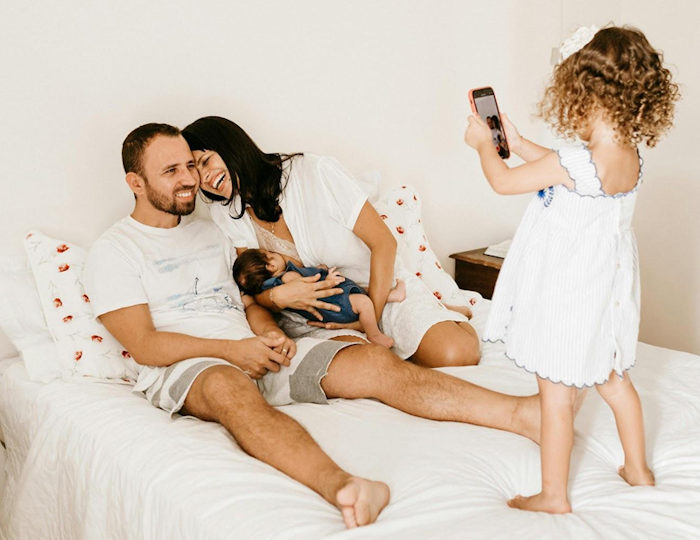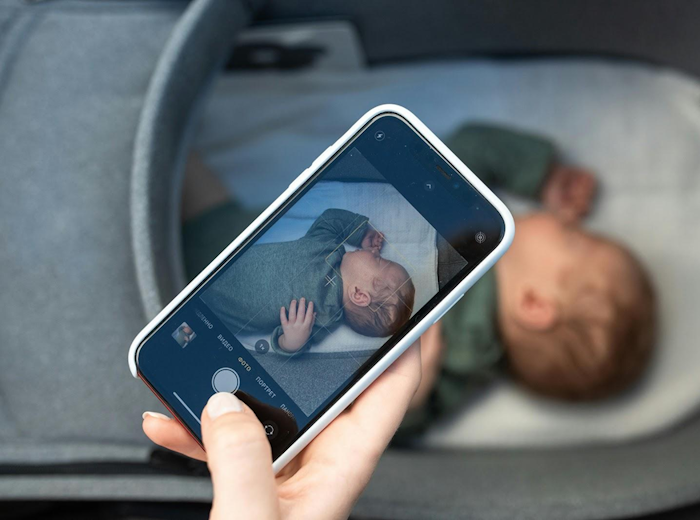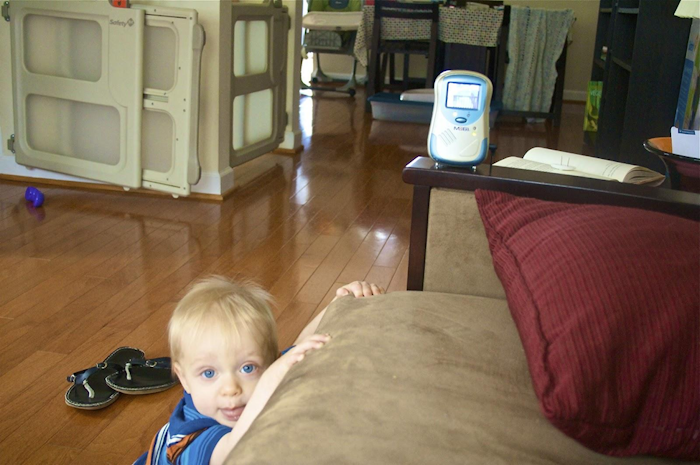Baby monitors have become a common device for families to ensure the safety of their little ones throughout the night. This handy equipment offers peace of mind for parents, allowing them to keep an ear or eye on their baby while they rest. However, the question remains whether there is a proper way to use baby monitors. Moreover, are there any benefits of sleeping with baby monitors? This article will explore how parents can pick the right baby monitors or baby breathing monitors for themselves.
Why Parents Use Baby Monitors at Night?
 For many parents, leaving their babies alone to sleep can be overwhelming. Baby monitors provide a safety net for such occasions. Parents can listen or watch over their little one without having to be physically present in the room. This equipment provides reassurance for parents to immediately know if their baby cries or makes an unusual noise. Also, sleeping with baby monitors helps parents cope with separation anxiety. Parents are relieved from the stress of overthinking their child, plus they can respond quickly in case their baby is in need.
For many parents, leaving their babies alone to sleep can be overwhelming. Baby monitors provide a safety net for such occasions. Parents can listen or watch over their little one without having to be physically present in the room. This equipment provides reassurance for parents to immediately know if their baby cries or makes an unusual noise. Also, sleeping with baby monitors helps parents cope with separation anxiety. Parents are relieved from the stress of overthinking their child, plus they can respond quickly in case their baby is in need.
Many parents believe that using a baby monitor is essential. It boosts the confidence of parents while keeping a safe sleeping environment for the baby. Furthermore, having a device to keep tabs on your little one prevents missing critical signs of distress.
Monitoring devices come in different types, but the shared goal is the same: to help parents feel connected and responsive, especially during those long, uncertain nights.
Audio vs. Video Monitors: What Helps You Sleep Better
Baby monitors generally come in two main types: audio-only or video-enabled. Each has its benefits and challenges when it comes to helping parents get rest.
Audio monitors simply transmit sound. They allow you to hear your baby’s cries, coos, or movements without seeing them. This simplicity can be an advantage. You do not get distracted by every little movement, so you might fall back asleep more quickly after hearing a small noise.
On the other hand, video monitors show a live feed of your baby. Seeing your child can be very comforting, helping parents know instantly if their baby is just stirring or truly upset. However, watching the screen can also increase a parent’s alertness and sometimes anxiety. The temptation to stare at the screen can disrupt sleep.
Choosing between audio and video depends on personal preference and what helps you relax most. Some parents prefer the reassurance a video offers, while others find audio monitors less intrusive to their sleep.
Can Using a Monitor Increase Anxiety or Disrupt Sleep?
While baby monitors are meant to reduce worry, they can sometimes do the opposite. Constant listening or watching can heighten a parent’s awareness, making it harder to relax fully.
Every sound or movement might trigger a response, even if the baby is not in distress. This hypervigilance can cause fragmented sleep and leave parents feeling tired the next day. It is important to recognize if the monitor is causing more stress than relief.
Some experts warn that parents can become overly dependent on monitors, undermining their confidence in reading their baby’s needs without technology. It is healthy to use the device as a tool but not let it take over your peace of mind.
Choosing Notification Settings That Don’t Wake You Unnecessarily
One key to getting restful sleep while using baby monitors is managing notification settings. Most monitors allow parents to adjust volume, sensitivity, and alert types.
Setting notifications to trigger only with loud or urgent sounds can prevent waking for harmless noises like shifting or small sighs. Many monitors also have vibration or light alerts, which can be less disturbing than loud beeps.
Some parents opt for wearable receivers that gently alert them without disturbing their whole household. Others use “do not disturb” modes during certain hours or times when the baby tends to be quiet.
Testing and customizing these settings based on your baby’s habits can help you find the right balance between being alert and getting rest.
Safe Placement of Monitors in the Nursery or Co-Sleeping Setup
 Placement of baby monitors plays a crucial role in usability and safety. In a nursery setting, the monitor should be placed far enough from the baby’s crib to avoid any risk of strangulation or interference but close enough to pick up sounds clearly.
Placement of baby monitors plays a crucial role in usability and safety. In a nursery setting, the monitor should be placed far enough from the baby’s crib to avoid any risk of strangulation or interference but close enough to pick up sounds clearly.
For families who practice co-sleeping or room-sharing, monitor placement requires extra care. Devices should not be positioned where cords or parts might get tangled with bedding or disturb breathing areas.
Follow the manufacturer’s instructions carefully, and make sure the monitor is secure and stable. Keep monitors out of reach of babies and toddlers to prevent any hazards.
Using Movement or Breathing Monitors: Are They Necessary?
Movement or breathing monitors are designed to alert parents if their baby stops moving or breathing for a set time. These devices provide an extra layer of safety, especially for newborns or babies at risk.
However, not all experts agree that these monitors are essential for every family. While they offer reassurance, they can also increase anxiety. Parents need to be aware that a false alarm might happen, causing unnecessary panic.
If you decide to use a baby breathing monitor, select a reliable product from trusted sources. Notably, monitors from specialists like baby breathing monitor collections often come with tested features for accuracy.
Movement and breathing monitors should complement, not replace, safe sleep practices like placing babies on their back and using firm mattresses without loose bedding.
Balancing Monitoring With Trusting Your Instincts
 Technology can only do so much. Knowing your baby, reading their cues, and trusting your instincts remain the most powerful tools for parenting.
Technology can only do so much. Knowing your baby, reading their cues, and trusting your instincts remain the most powerful tools for parenting.
Some nights, you might rely on the monitor more through heavy fatigue or worry. Other times, listening to your baby’s overall patterns and body language without screen or sound reliance builds confidence.
Balancing technology with intuition means using monitors wisely—not allowing devices to take over your experience as a parent. Remember, most babies will let parents know when something is wrong without alarms.
When (and If) It’s Time to Stop Using a Monitor at Night
There is no set rule for when to stop using a baby monitor. Many families gradually transition away as babies grow older and become more independent.
Signs it might be time include your baby sleeping through the night regularly, your own decreased anxiety, or when monitor use disrupts rather than supports sleep.
Some parents choose to keep monitors well into toddlerhood for peace of mind during illness or developmental stages like crawling.
Ultimately, the decision should feel right for your family’s comfort and sleep quality.
Conclusion
Sleeping with baby monitors can bring valuable peace of mind without sacrificing restful sleep—when used thoughtfully. Choosing the right type of monitor, adjusting notification settings, placing devices safely, and knowing when to rely on instincts can create a healthy balance for parents.
Using reliable technology like a baby breathing monitor from trusted collections can add safety, but should always support, not replace, good sleep habits and parental intuition. With these insights, parents can embrace monitoring as a helpful tool on their parenting journey while enjoying peaceful nights.





